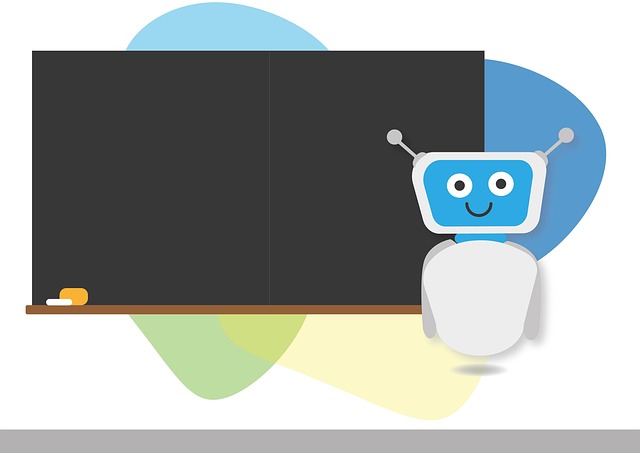In the past decade, the conversation around artificial intelligence has shifted from speculative science to everyday reality. We find ourselves typing into a small square of a screen to order a coffee, book a flight, or simply ask a question that would have taken a human to answer a year ago. The vehicles that make this possible are chatbots—software agents designed to simulate human conversation. While they have grown in capability, the way we interact with them has also become a reflection of how we conduct social exchanges online. This article explores the intersection of chatbots and social etiquette, considering how digital trends shape communication norms and what responsibilities we share in maintaining respectful and ethical interactions.
The Rise of Chatbots in Everyday Life
From the first rule‑based systems in the 1960s to the sophisticated natural‑language models of today, chatbots have evolved from novelty experiments into essential tools for businesses and consumers alike. They operate in a wide array of contexts: customer service portals, personal assistants on smartphones, and even mental‑health triage apps. The ubiquity of chatbots has created a new layer of conversational etiquette that is often overlooked. While human‑to‑human interactions are governed by longstanding norms—tone, politeness, timing—bot interactions are subject to a mix of technological constraints and social expectations that are still being written.
A Brief History
The first chatbot, ELIZA, was created in 1966 by Joseph Weizenbaum. It used pattern matching to simulate a psychotherapist, showing that simple rule‑based dialogue could mimic human conversation. Later, in the 1990s, AIML (Artificial Intelligence Markup Language) emerged, giving developers a structured way to design scripted responses. By the 2000s, the term “chatbot” entered mainstream vocabulary, thanks to customer support applications that reduced wait times and cut operating costs. The present era, dominated by deep learning and transformer architectures, allows chatbots to understand context, generate more natural language, and adapt to user preferences, making them indistinguishable from human operators in many settings.
“The more sophisticated the chatbot, the more human it feels. When it understands you, you forget it’s an algorithm,” remarks a tech analyst familiar with recent developments.
Social Etiquette in the Digital Age
As digital conversations have outpaced face‑to‑face interactions, the lines of social etiquette have blurred. In the absence of visual cues—tone of voice, body language—communicators rely on textual conventions such as punctuation, capitalization, and emoji. When the conversation partner is a chatbot, those cues are still absent, yet users continue to project human expectations onto the interaction. The question becomes: what rules should govern how we speak to chatbots, and how do those rules shape the design of the bots themselves?
- Clarity over formality: When asking a chatbot, concise language reduces ambiguity.
- Respectful tone: Politeness signals trust, even if the bot does not feel offended.
- Contextual awareness: Providing enough background helps the bot deliver accurate responses.
Do’s and Don’ts When Talking to Chatbots
While chatbots are engineered to handle repetitive queries, the user experience can be improved by following simple guidelines.
- Do frame your request as a clear question or statement; avoid ambiguous phrasing.
- Do be patient; allow the bot time to process and respond—especially on mobile networks.
- Do give feedback when a response is inaccurate; many platforms refine their models based on user corrections.
- Don’t expect human-level empathy; if you need emotional support, seek a trained professional.
- Don’t share highly sensitive personal information unless you know the bot’s privacy policy and data handling practices.
- Don’t treat the bot as a private journal; remember that data may be logged for improvement.
Ethical Considerations and User Trust
As the boundary between chatbot and human blurs, ethical concerns intensify. Transparency about the bot’s capabilities, data usage, and limits is not merely a legal requirement but a cornerstone of trust. Users who unknowingly rely on a bot that misinterprets their request can suffer frustration or, in some cases, financial loss.
Transparency, Consent, and Data Privacy
Companies deploying chatbots must adhere to privacy regulations such as GDPR and CCPA. This involves:
- Clear privacy notices that explain what data is collected and how it is used.
- Opt‑in mechanisms for data sharing, particularly for voice or conversational logs.
- Regular audits of data retention policies to prevent misuse or unauthorized access.
Beyond legal compliance, ethical design invites users to understand that the chatbot is a tool, not a person. This understanding helps mitigate the anthropomorphization that can lead to unrealistic expectations or misplaced reliance.
Future Trends: From Reactive to Proactive
Current chatbots largely respond to explicit input. The next generation envisions proactive assistants that anticipate needs based on contextual data. For example, a travel bot might suggest a new itinerary after detecting a change in flight status, or a health bot might remind a user to take medication. These anticipatory behaviors introduce new etiquette challenges:
- When should a bot interrupt? Users value autonomy, so unsolicited suggestions may be perceived as intrusive.
- How to communicate uncertainty? Even proactive bots should express confidence levels, allowing users to decide whether to act on the suggestion.
- What are the boundaries of personal data usage? Proactive recommendations rely on deeper data mining, raising privacy concerns.
AI Companions and Mental Health
Beyond practical assistance, chatbots are being explored as companions for mental health support. While these systems can provide cognitive behavioural therapy prompts or track mood, they lack the nuance of human empathy. Social etiquette in this domain requires clear boundaries:
- Clearly state that the bot is not a substitute for a licensed professional.
- Offer resources or referrals when a user signals distress.
- Maintain consistent tone and privacy to build a safe conversational environment.
Ethical frameworks that incorporate consent, transparency, and fallback options are essential to avoid exploitation or emotional harm.
Conclusion
Chatbots have become invisible partners in our daily routines, silently shaping how we manage tasks, access information, and even process emotions. As the line between human and machine blurs, so too must our conversational norms evolve. By treating chatbots with the same respect, clarity, and ethical mindfulness we reserve for human counterparts, we can ensure that digital interactions remain smooth, trustworthy, and beneficial. The future of technology etiquette hinges on our willingness to embed transparency, consent, and user autonomy into every line of code that powers these invisible assistants.




